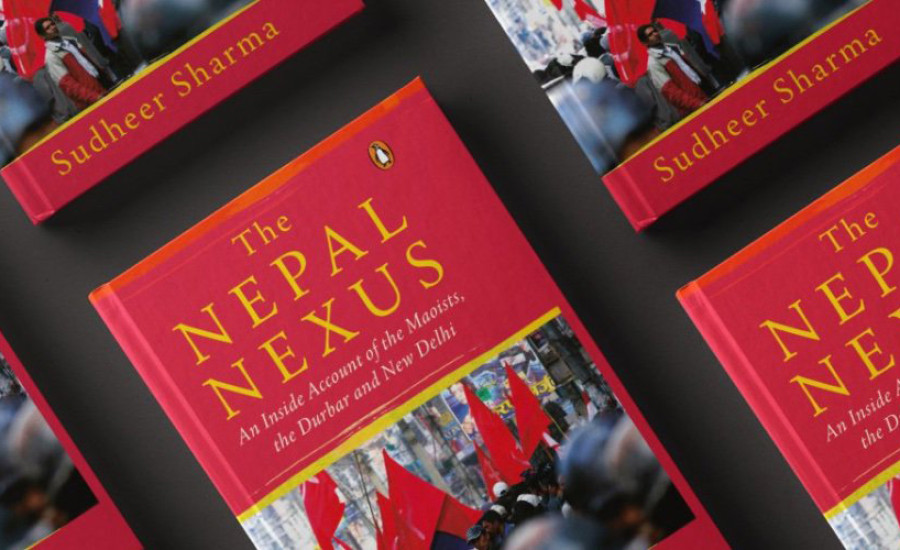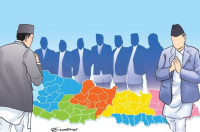Columns
The historicism of The Nepal Nexus
All the people who understood that power keeps shifting must understand that they are rereading their own past by reading this book.
Abhi Subedi
When I first opened up The Nepal Nexus it was hard not to notice that this was the English translation of journalist Sudheer Sharma's much-touted book Prayogshala (2013). The Nepali version of the book had created, to use the media term, a 'sensation' at that time. It invited both praise and criticism from different sections of the reading public.
The Nepal Nexus, translated by Sanjaya Dhakal is published by Penguin Viking in 2019, and has already stirred conversation on social media. One former Maoist leader tweeted that it is a biased work. That means this book is being freshly circulated in Kathmandu. This fat tome running into 521 pages was not something that I would start reading immediately because of a number of backlogs waiting to be cleared. But I was drawn to it after reading Sudheer Sharma's introduction.
Sharma has written the introduction as a personal essay with some confessions, and claims of wisdom. It shows how, in a journalistic text written by a seasoned, active journalist, one can see history appropriating the political semantics over the years of the historical transformation, of which nobody can take singular ownership. After reading this book, I realised how the spectre of political contacts, agreements and negotiations haunt Nepali history, whether they are made between power groups within Nepal or with India and China. The Delhi agreement of 1950 made between Nepal and India or the agreements between Nepali political parties made in Nepal or in India are evoked in any discussions about neighbourly relations and political power-sharing. Sudheer Sharma evokes historicity of events and agreements that reverberate today. The historicity has changed because the political parties, who were the participants in the agreements, are experiencing changes, too. Perceptions regarding the Delhi Agreement have also changed. Now, arguments of the political parties have shifted to the concept of correct paths, most of which reflect ambivalent attitudes that are getting more complex by the day.
Sharma's book takes up the fluidity of the relationship of the Maoists with the other political parties and the capricious nature of the power groups. This book reminds you of all that you lived with. Sudheer Sharma does not invent; he reports. But the reports create a texture of history that is sometimes confusing yet dynamic in character. But the same texture has become the trope of the current times in Nepal, and the uncertainties that haunt both the political parties in power and in opposition.
Sudheer Sharma begins with the metamorphosis of the Maoist party when Prachanda ‘gave up his love for Maoism’ and unified his party with UML and created what is now called the Nepal Communist Party on May 17, 2018. The declaration of the electoral alliance with the UML on 3 October 2017 is such a turning point that has put an end to the era of Maoist insurgency. Sharma questions, ‘Where did this direction take him? Did it do justice to his political past?’ It is still too early to say but the answers, he believes ‘will be of great interest’ for political commentators, political scientists and the Nepali people.
Sharma gives credit to the Maoists for the changes 'like the republic, federalism, inclusion, etc.’ While acknowledging the role of the parliamentary parties and the Madhesi parties, he says, the Maoist movement 'was a decisive factor'.
Reading the book is like reading Prayogshala once again, but one comes across important changes in different sections of the book. Some chapters of Prayogshala have been dropped in this. Reading the book is like reading a ‘metahistory’, which is a famous methodology of the great historian Hayden White to whom reading history is like reading the course of events that have happened, from a distance. Interpreting history with historical consciousness or reading of history with history itself as the tool is meta-historical reading. There is no space here to repeat the major events that Sharma has written. But some of the landmarks like the agreement between parties, the uneasy and strategic relations that the Maoists established with the king and Delhi, the palace massacre and the weakness of Girija Prasad Koirala as prime minister at that time, the folly of king Gyanendra and his Hamletian hubris of evoking the spectre of his father king Mahendra by raising the senile and retired political loyalists of his father, are vital moments of the turbulent yet revolutionary period in Nepali history.
This book represents a time when journalists, novelists, political scientists and historians honed their skills in interpreting the times. Our literary colleagues too wrote novels by using the same characters and events that Sudheer Sharma has described in his book. One who wants to make a new historicist interpretation of the times will realise how interpreting the Nepali history by using the old grand method was not working in the current times when history traversed through 'contrived corridors' as said by poet TS Eliot's character in ‘Zerontion’. I think Nepal Nexus presents a picture of the same 'contrived corridors'. Sudheer Sharma may have given priorities to some events than the others, giving some a reason to believe that he was a little too hard on them, but the reality is that all the political parties and people who painfully understood that power does not remain in one place and keeps shifting, must understand that they are rereading their own past by reading this book.
Nepal Nexus is a reminder of not only what mistakes were made but also of what successes were achieved over the period. Historical experience is not only a memory of abstractions but also of the moments of liberating experiences. This book is the record of the times the journalist lived through; it may be called his personal journey through the turbulent times. But most of the characters mentioned in this book have been in power or in opposition. But in the current times, the other power called the people has joined the historical race. And that makes a world of difference in our reading of history.
***
What do you think?
Dear reader, we’d like to hear from you. We regularly publish letters to the editor on contemporary issues or direct responses to something the Post has recently published. Please send your letters to [email protected] with "Letter to the Editor" in the subject line. Please include your name, location, and a contact address so one of our editors can reach out to you.




 17.12°C Kathmandu
17.12°C Kathmandu















